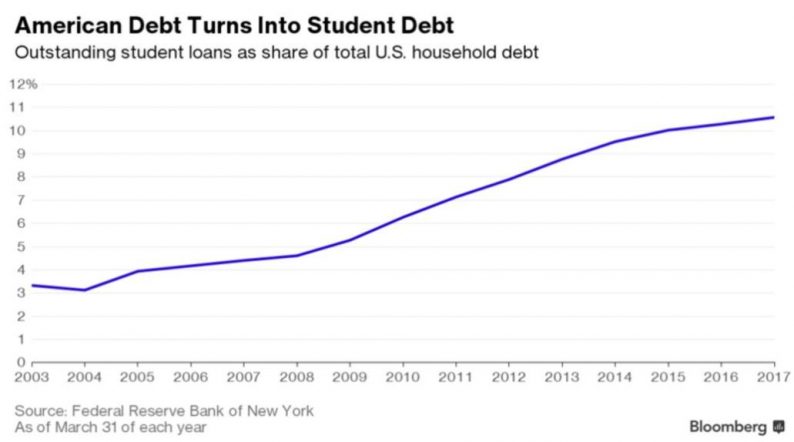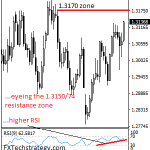Student loan debt has tripled as a percentage of total debt owed by U.S. households in less than 15 years, Shahien Nasiripour of Bloomberg News recently reported
In 2003, student loans accounted for 3.3% of total household debt, or $240.7 billion, according to estimates by the Federal Reserve Bank of New York. Now that figure stands at ~ $1.3 trillion, or 10.6% of all household debt. The Federal Reserve Bank of Washington pegs that figure even higher at over $1.4 trillion.
The larger amount of debt reflects higher tuition and campus-related costs as well as declines in state appropriations to public colleges and federal student grants relative to rising college costs. 1 in 6 American adults, 44 million, has student loan debt outstanding.

And student loan debt is only set to rise further as interest rates on federal student loans for the 2017-18 academic year reset on July 1st.
Undergraduate students will pay 4.45% in interest on new Stafford loans, up from current 3.76% rate. For graduate students, the interest rate on new Direct loans will climb from 5.31% to 6.0%. Parents who take on federal debt to help their children pursue a degree can expect to pay 7.0% on a PLUS loan, up from 6.31%. This is comes at a time when interest rates, in general, are quite low – U.S. 10-year Treasury notes currently yield ~ 2.20%.

Because many students and their families have to borrow money each year, continued annual increases could take a significant toll.
The new rates track closely with projections from the Congressional Budget Office, which anticipated rates to top 6 % on undergraduate loans, 7.5% on graduate loans and 8.5% on PLUS loans by 2018.
The government resets interest rates on student loans every year based on the spring rate of the 10-year Treasury note (this year, May 10th the 10-year Treasury was 2.4%), plus a fixed margin (2.05%, 3.6%, and 4.6%, respectively, for Stafford, Direct and Plus loans). Next July’s rates could be higher as interest rates look set to rise, but there are protections for families.













Leave A Comment